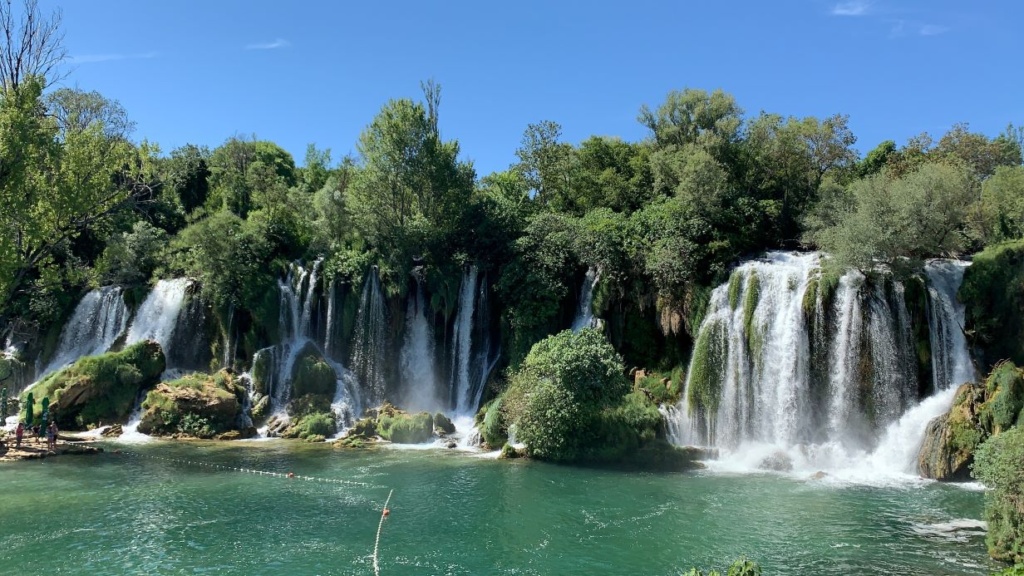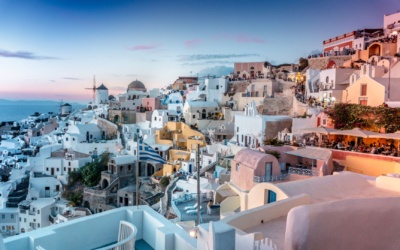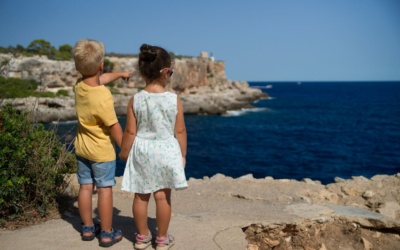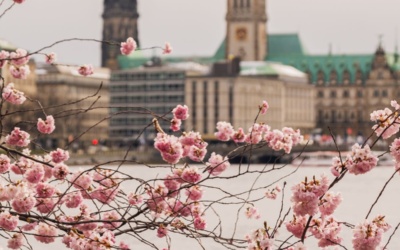We hate to say this, but many Americans do not know what or where the Balkans are. The region takes its name from the Balkan Mountains that stretch throughout the whole of Bulgaria. The Balkan Peninsula is bordered by the Adriatic Sea in the northwest, the Ionian Sea in the southwest, the Aegean Sea in the south, the Turkish Straits in the east, and the Black Sea in the northeast. The concept of the Balkan Peninsula was created by the German geographer August Zeune in 1808 and is a melting pot of different cultures, ethnicities, languages and creeds. So now that you know approximately where the Balkan Peninsula is, what is there to do in the Balkans?
The best way to explore this region is to cover a few parts at a time on several trips or take a whole month to stop in as many countries as possible, trying not only to visit the capitals but also the most fascinating and hidden places in each country.
To outline a long journey in the Balkan countries, we have accumulated a series of suggestions that allow you to discover many fantastic places scattered in the various countries of the region. It focuses on the most interesting places scattered between Croatia, Bosnia and Herzegovina, Montenegro, Albania, Bulgaria, North Macedonia and Slovenia.
SLOVENIA
Small but full of attractions between history and nature, Slovenia boasts numerous sites protected by UNESCO as a World Heritage Site.
Imposing mountains, historic cities, medieval castles, ancient churches and a spectacular coast are concentrated in a small geographical area.
The stops not to be missed when visiting are the capital Ljubljana, the coastal city of Piran, the Caves of San Canziano, Lake Bled complete with a Gothic castle inserted in a spectacular setting of snow-capped mountains and the Triglav National Park. Also worth seeing are the Idrija Mercury Mine, the Sečovlje Salt Pans Nature Park, Lake Bohinj and the Postojna Cave.
CROATIA
Thanks to its enchanting natural landscapes, Croatia is one of the most sought-after destinations by European tourists known for the clear water and wild beaches of the Dalmatian coast, pristine islands and historic cities such as the capital Zagreb.
A diverse country that ranges from- the Istrian coast to the mountainous hinterland of the Dinaric Mountains with rocky gorges, dense forests and lakes. As a result, there are numerous places to visit in Croatia, from the Plitvice National Park in Split with its ancient Diocletian Palace, a Unesco World Heritage Site, to the Krka National Park, in Rovinj, up to the islands of Hvar, Brač and Korčula.
Spectacular Dubrovnik deserves a separate mention with its ancient buildings, the enchanting beaches of Orebic, Cava and Lapad and the breathtaking views. The old city and the great walls that surround it are a UNESCO World Heritage Site.

Bosnia is rich in mountains such as the Dinaric Alps, national parks such as Una and ancient cities, such as Stolac.
BOSNIA – HERZEGOVINA
In the variegated socio-cultural context of the countries that make up the Balkan region, Bosnia-Herzegovina has the primacy of hosting numerous ethnic minorities, acting as a true crossroads of cultures and religions.
Its urban landscapes are characterized by churches and minarets, while the natural ones are rich in mountains such as the Dinaric Alps, national parks such as Una and ancient cities, such as Stolac, where styles and cultures of ancient dominations mix. The essential stages of the trip are the cities of Mostar, Sarajevo and Travnik, a former Ottoman capital surrounded by castles and mosques.
Also worth seeing is the small Trebinje and the famous sanctuary of Medjugorje.
MONTENEGRO
Montenegro can boast some of the most scenic natural landscapes in the Balkan region with hills overlooking the sea, sandy beaches, rugged mountains, canyons such as Tara, historic villages such as Kotor and lakes in the woods such as Shkodra surrounded by nature. Its coastal cities, such as Budva, are also fantastic, which combine ideal beaches for bathers and a medieval historic centre of great charm.
A beautiful experience to cross and discover the territory of Montenegro is represented by the Balkan Express train, which is one of the most beautiful railway routes in Europe. It reaches the long beaches of Bar, a picturesque town where the many ancient fortresses overlook the Adriatic coast. Also not to be missed are the pink sand beach of Stevi Stefan.
ALBANIA
One of the oldest regions in the heart of the Balkans is Albania with its centuries-old history testified by numerous castles and archaeological sites, such as Shkodër, the cultural capital of the country or Durres with the largest amphitheater in the Balkans or Kruja, a scenic old town. But in Albania, there are also coastal landscapes of rare beauty.
The Albanian Riviera boasts rolling hills and wild beaches surrounded by untouched nature such as the Llogara pass, the Llogara national park, the Gjipe canyon and beach, the archaeological site and the Butrint national park. Not to be missed are the towns of Berat and the stone city of Gjirokastra, the National Park of Theth or the turquoise coast in front of the village of Dhermi.
BULGARIA
Bulgaria is one of the largest and oldest countries in the Balkan region, with a large presence of significant historical sites such as the rock-hewn churches of Ivanovo and fascinating and diverse natural landscapes ranging from large national parks such as Central Balkan and Pirin to the seven Rila lakes.
The capital Sofia preserves its multicultural heritage with music, traditional dance, costumes and crafts hidden in the urban fabric of great architectural value. The ancient city of Nessebar stands on a steep peninsula with a historic center full of churches separating squares and cobbled streets, while the Rila Monastery is the largest and most historic in the country.
REPUBLIC OF NORTH MACEDONIA
The Republic of North Macedonia does not coincide with the territories of the historical region of Macedonia but extends over a smaller territory with a predominantly mountainous and landlocked character. Its harsh and wild nature is dotted with valleys, reserves such as the Mavrovo National Park, Canyons such as Matka and large lakes such as the crystal clear one of Ohrid, Orchid Lake with the Sveti Naum monastery or Prespa lake with the suggestive snake island.
The capital Skopje has a very ancient history testified by archaeological sites such as the Skopje Aqueduct and Scupi, and Ottman structures, especially the Old Bazaar and the Mustapha Pasha Mosque.
Not to be missed is the charming village of Ohrid, with its churches and monasteries named a UNESCO World Heritage Site.
Our Final Word
Throughout social media, we see many entries about Croatia, but not many about the other Balkan countries. Each have their own personalities, beauty and charm. We prefer to rent a car in Italy and drive most of the way, taking trains where it makes sense. The Balkans have everything you could want on a holiday: beautiful beaches and landscapes, ancient and historic cities, incredible national parks and friendly and welcoming people. When thinking of your next European holiday, think of the Balkan region. You will not be disappointed.
Related Posts
It does not matter whether it is the Eiffel Tower with a view, a fiery tango course or a carriage ride: there are romantic places that convert every romantic neurotic. Some are iconic when it comes to romance and others are places to discover together with your loved…
Though my kids are grown, and Kati and I have none together, we have seen some of the best places where kids can enjoy themselves while traveling. Though we live in Florida, we do not recommend and have not included places like Disney World. We feel that they have…
We know it is spring when the Cherry Blossoms are starting to bloom. The Cherry Blossom is the national flower of Japan and represents a time of renewal and optimism. There are many places to see them in the US including Washington, DC and even in my home state of…


